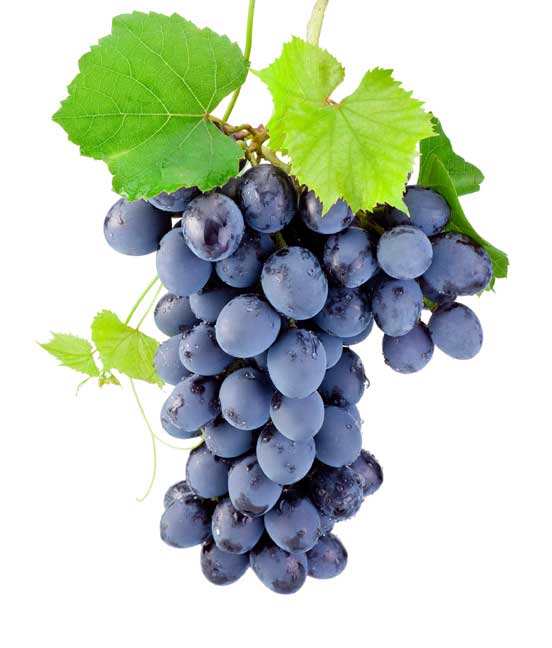Grape Expectations
Published 10:55 am Thursday, August 27, 2015
Success in grape jelly making is like crafting a good wine — you have to know your grapes and when to harvest them.
Depending on the weather and a few other variables, the grape harvest generally begins mid-August here in Southside Virginia. On our farm it’s one of the last canning projects of the summer garden season and one I particularly enjoy.
Our grape vines bear an especially fragrant Concord variety started from cuttings from a neighbor whose log cabin pre-dated the Revolutionary War. I like to think that Patrick Henry (an original trustee of Hampden-Sydney College) would recognize his favorite grape jelly if he happened to stop by for tea on jelly-making day.
Grape jelly is, in fact, a uniquely American creation. Wild grapes were plentiful to the early American settlers, and grape jelly was among the many uses they had for the early fall fruit. When Concord grapes first made the scene in the mid-1800s, their rich color and sweet flavor, with just a hint of bite, made them an instant hit with jelly-makers.
That tradition continues today. Making grape jelly isn’t really difficult, but it does require a little time.
The first step, after picking the grapes, is to wash them in a sink filled with cool water. Pull the ripe grapes from each cluster (a few not-so-ripe ones are permissible) and place them in a large canning pot. Discard stems (again, a few of the smaller ones can go in the pot as well). Add about an inch of water to the pot, cover and simmer for about an hour. If you have an old-fashioned potato masher, use it to mash the grapes to release the juice. When the grapes are nice and soft, take the pot off the burner.
At this point, I usually cover the pot and let the grapes steep for an hour or so which also cools them in preparation for the next step.
Line a large colander with a double thickness of cheesecloth and place it in an even larger bowl. (I usually set the colander on a clean teacup or coffee mug placed in the bowl so that the colander won’t be sitting in the juice as it drains.)
Pour the grape pulp into the colander, leaving room to pull up the sides of the cheesecloth and squeeze, which will be the next step.
After the juice has drained on its own, pull the cheesecloth up around the grape pulp and gently squeeze to release more juice. Place the squeezed pulp in another large bowl (to give to the chickens or other wild birds outside who might enjoy it), rinse the cheesecloth to remove the grape residue and repeat the process until all the grape pulp has been drained and squeezed. (The cheesecloth can be reused, although now it is a nice purple color — just soak it in a little bleach and water, then launder as usual.)
Pour the extracted juice into clean quart or half-gallon jars and you’re ready to make jelly. If you prefer to take a break at this point, put lids on the jars and refrigerate for up to a week until you’re ready to make jelly.
There are several techniques for making jelly and jam. I prefer the simplest — Sure Jell. I also happen to think it gives the most consistent results, so that is an added bonus.
Now for Jelly-Making 101:
• wash jelly jars (half pints) in hot soapy water;
• place clean jars in a large pot, fill pan and jars with about an inch of water and bring to a low boil for about 10 minutes to sanitize jars (if making more than one batch of jelly, wash all the jars so you can replace the ones in the boiling water as you work);
• if making more than one batch of jelly, don’t try to double up and make two batches at once — it doesn’t work!;
• find a large pot (one that won’t bubble over when the jelly mixture starts to boil), and you’re ready to go!
Concord Grape Jelly
5 c. prepared grape juice 7 c. sugar
1 box Sure Jell
Place grape juice and stir in 1 box (1.75 oz.) Sure Jell pectin in a large canning pot. Bring to a full rolling boil (one that doesn’t stop bubbling when stirred) on high heat, stirring often. Continue to boil for one minute. Add sugar and let mixture return to full rolling boil; boil for exactly one minute, stirring constantly. Remove from heat and skim off any foam (save this for toast or PBJ sandwiches). Ladle jelly immediately into hot sterilized jars to within 1/8 inch of jar tops. Place canning lids in the hot water while wiping jar rims carefully with a paper towel dipped in the hot water. Carefully put lids on jars and screw on ring seals; tighten securely. Immediately invert jars (turn upside down) on a clean kitchen towel. Leave in this position about 15 minutes, then turn jars right side up — jars should be sealed. Once jars have cooled completely remove the jar rings (leave sealed lids in place) and carefully wash outside of jars to remove any jelly residue. Yields about 8 half pints.






